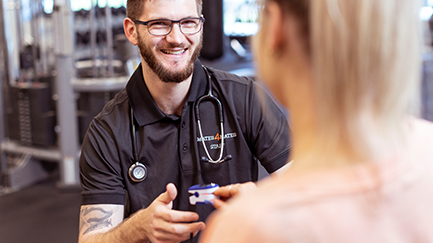On the 20 October each year is World Osteoporosis Day which serves as a reminder of the importance to look after our joint and bone health through physical activity.
Bones play many roles in the body — providing structure, protecting organs, anchoring muscles and storing calcium.
While it's important to build strong and healthy bones during childhood and adolescence, you can take steps during adulthood to protect bone health, too.
If your bone strength begins to decrease, this can lead to osteoporosis.
What is osteoporosis?
Osteoporosis, meaning ‘porous bone’, is a condition that causes bones to become thin and lose their strength as they become less dense, and their quality is reduced. People with osteoporosis lose minerals in their bone, such as calcium, more quickly than the body can replace it. This can lead to broken bones, which can cause pain and disability.
Australian statistics show that up to 20% of Australians over the age of 75 have been diagnosed with osteoporosis:
- Veterans are at a higher risk of developing osteoporosis due to their work and having conditions that may prevent them from engaging in high intensity physical activity.
- Females are also at a greater risk during menopause, as reduced estrogen negatively affects bone growth.
- If you are greater than 65 years old, your risk of developing osteoporosis also increases.
Osteopenia is a pre-cursor to osteoporosis, where the bones are weaker than normal but not enough to be called osteoporotic.
Stepping up for bone health
You might think that an ageing and changing body means that you should avoid physical activity and exercising, but in fact it’s the opposite.
Physical activity, more specifically high intensity and consistent physical activity, promotes an increase in bone growth and repair to aid the changes that can occur prior to osteoporosis or once the condition has been diagnosed.
When looking at exercises that may be beneficial for your bones, these should include high load resistance exercises, high impact exercises, and/or high intensity activity.
Seeking help from an exercise physiologist
If diagnosed with osteoporosis, it is best to consult an exercise physiologist to ensure that you are prescribed safe exercises tailored to you and your health. One size does not fit all.
T-scores from a bone mineral density test can determine if there is a low, moderate or high risk of osteoporosis and an exercise physiologist can prescribe exercises based on these risk categories.
They will then guide you through specific exercises and high-intensity activity to achieve appropriate bone growth and repair to assist in the prevention or management of osteoporosis and reduce the risk of falls and fractures.
Support at Mates4Mates
If you are a veteran or family member who has been impacted by service who is looking to improve their physical health and wellbeing, please call 1300 4 MATES (62 837) to book an appointment with a Mates4Mates exercise physiologist.
Written by Aric Visentin, Exercise Physiologist





